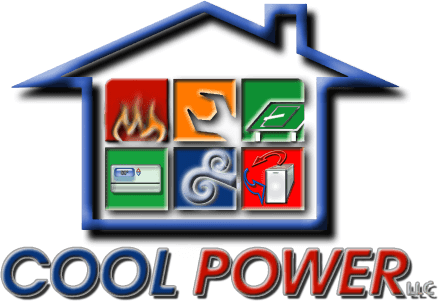If your heat goes out in the middle of winter, it can leave you scrambling, trying to figure out what to do. Your first priority may be trying to figure out how to get it fixed as soon as possible while still keeping your family warm all at the same time. Fortunately, there are 11 things that you can do when your heat goes out.
1. Turn Off the Gas to Your Furnace
If you are like a lot of individuals, you may have a gas furnace that provides heat to your home. Once you’ve realized that the heat isn’t working, you need to turn off the gas right away. This will ensure that you aren’t breathing in any toxic fumes or putting yourself at risk of starting a fire. The gas shut-off is generally located near the service valve that’s right next to your home’s gas meter. You can shut it off by turning the lever so that it’s crosswise. After you’ve shut it off, you need to schedule HVAC service right away.
2. Look to See if It’s a Simple Fix
There may be times when there’s a simple solution to getting your heat to start working again. Your thermostat may simply just need new batteries, or someone may have accidentally switched a setting from heat to cool. The breaker could have also tripped, and you can usually get the heat to start working again just by flipping the breaker switch.
3. Call an HVAC Specialist
When your heater goes out, you should give our HVAC technicians a call. They will be able to quickly diagnose the problem and determine the best way to get your heat working again. If you call us when your heat goes out, we will try to quickly diagnose the problem and get it working as soon as possible.
4. Close Doors to Rooms That You Aren’t Using
Once your heat stops working, you will find that your home can get chilly very quickly. This is why it’s important to close doors to rooms that you aren’t using. You don’t want any warm air escaping to these rooms. You also don’t want cold air that’s in them coming into any of the rooms that you’re using.
5. Open Your Window Coverings During the Day and Close Them at Night
Fortunately, your window coverings may play a huge part in keeping your house warm. During the day, you should open them so that the sun can warm up the inside of your home. Once the sun goes down, you need to close them to keep warm air from escaping.
6. Get Moving
If you’re struggling to find a way to keep yourself and your family warm, you can always get moving. Play a game of indoor freeze tag, dance to some music, or do some jumping jacks in the living room. By doing all of these things, you can raise your body temperature, keep everyone entertained, and get in some physical fitness as well.
7. Use Safe, Alternative Methods to Heat Your Home
Just because your heater goes out, it doesn’t mean that you and your family need to be uncomfortable. There are some safe, alternative methods that you can utilize to heat your home. If you have a fireplace, you may be able to quickly warm parts of your home. Just make sure your flue is adjusted properly so that all of the smoke will go outside.
If you have a space heater, make sure you use it properly. Keep it away from furnishings and flammable items. You should place it in an area that’s out of the way so that no one will inadvertently knock it over. It’s imperative that you put out the fire in your fireplace or turn off your space heater before you go to bed at night. While you may not want to wake up to a chilly house, you should never leave either of these items unattended. If you don’t have a fireplace or a space heater, you may be able to raise the temperature in your home a few degrees by baking something in your oven.
8. Layer Up
A lot of people deal with a broken heater by simply layering up. You can do this by putting on several pairs of sweatpants, socks, and shirts. It’s best to choose clothes that are tight-fitting and thick so that they can trap in your body heat. If you don’t want to sleep in all of these items, you can stay warm by throwing a few extra blankets on your bed.
9. Stay Indoors
When your heat goes out, you need to keep your exterior doors closed. You don’t want all of the cold air coming inside just because you keep going in and out. Try to limit the number of times that you need to exit your home. If you can, save tasks like taking out the trash or shoveling your driveway for when your heat is back on.
10. Check for Drafts
A lot of homeowners don’t realize that drafty doors and windows can substantially lower the temperature inside their homes. When your heat is out, you need to check to see if there are any drafts coming in. You can do so by standing in front of your windows and doors and feeling for air. If you do happen to notice a draft, you may be able to temporarily stop it by putting a towel under the door or putting tape around the edges of your windows.
11. Leave When It Starts to Get too Cold
As much as you probably want to stay in your house, you will find that there comes a point where it’s no longer safe. This is especially true if you have children, elderly or sick individuals living in your house. For the general population, they shouldn’t stay in a house that is colder than 50 degrees Fahrenheit. By doing so, they put themselves at risk for hypothermia. If your thermostat on your HVAC system is still working, you can always keep an eye on the temperature in your house by checking it frequently. Do keep in mind, though, that this temperature is only a suggestion. If you can’t stop shivering, feel excessively cold, or have a difficult time keeping your eyes open, hypothermia may be starting to set in, and you need to go someplace where you can warm up.
Call Us Today to Get Your Heat Working Again
While no one wants to deal with a broker heater, especially in the dead of winter, we are here to help. Call Cool Power LLC so that we can determine what the problem is and get your heater up and running again. We can do everything from swapping out your old thermostat to replacing your entire HVAC system. We provide comprehensive heating and cooling services to Ronkonkoma, NY residents, including 24-hour repairs. We offer mini-split systems, furnaces, and heat pumps. You can also find out more about our maintenance plan.


